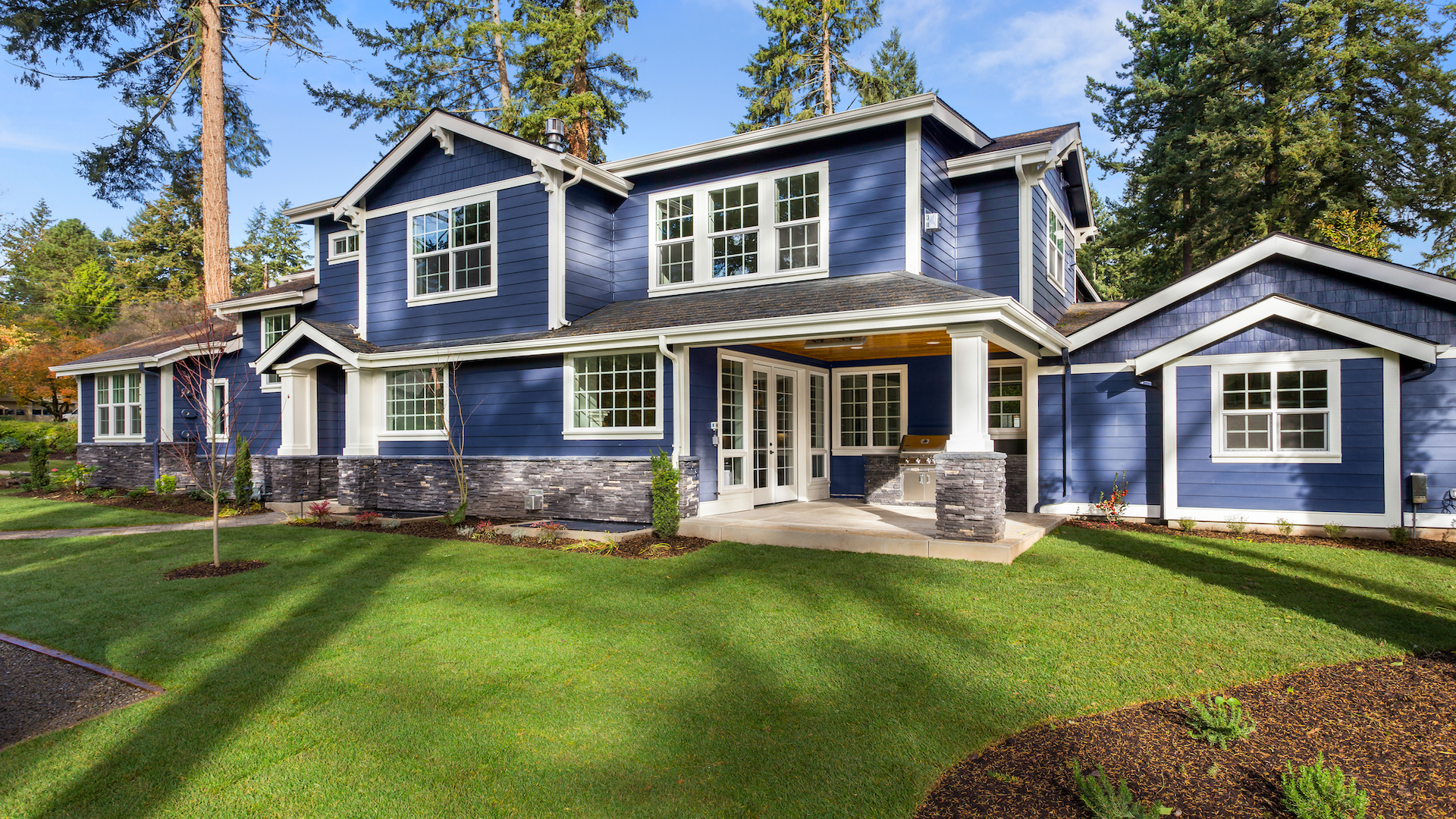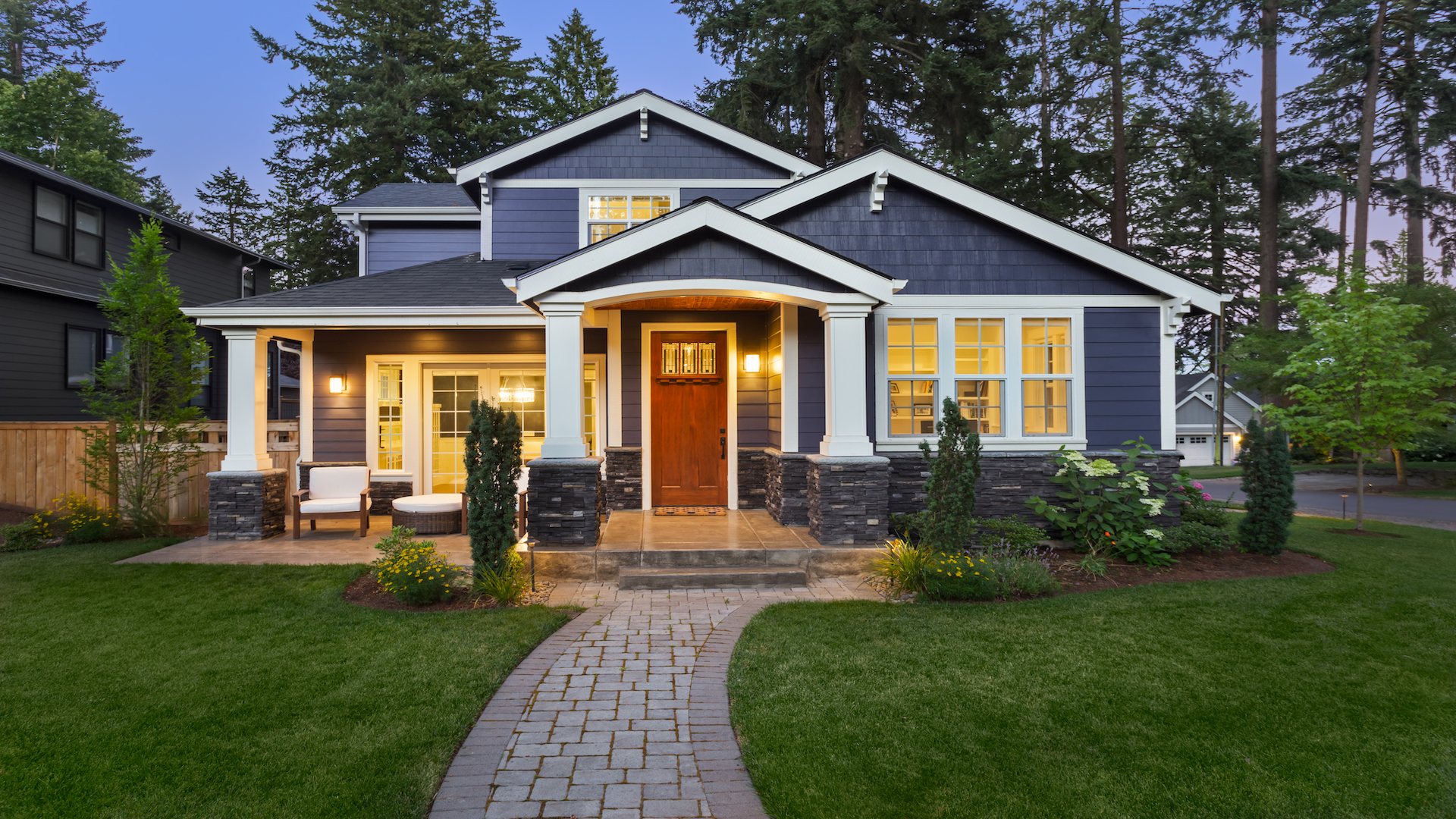
What is the NACA program?
The Neighborhood Assistance Corporation of America (NACA) helps remove some of the obstacles to homeownership for borrowers in need.
A NACA mortgage requires no down payment or closing costs. And borrower requirements — like credit score and income thresholds — are very lenient.
This nonprofit group has helped thousands of families secure affordable housing, so it might be able to help you too. Here’s what you should know.
Check your home buying eligibility with top lenders (Aug 2nd, 2021)In this artic (Skip to…)
NACA’s Best in America Mortgage
The NACA Best in America Mortgage is a program that helps low-income and moderate-income borrowers realize their dream of homeownership.
This nonprofit organization is certified by the U.S. Department of Housing and Urban Development (HUD), and its goal is to assist economically disadvantaged families through the home buying process.
The program is unique from other mortgage programs because borrowers can buy a home with:
- Low credit scores
- No down payment
- No closing costs
- No private mortgage insurance (PMI)
NACA borrowers also receive below-market mortgage rates, which can help lower their monthly mortgage payments and make homeownership more affordable.
Requirements for the NACA program
Buying a home with no down payment or closing costs probably sounds like a pretty good deal. It might even sound too good to be true.
The catch? This program isn’t available to everyone. To qualify for NACA’s Best in America Mortgage program, borrowers need to meet certain eligibility requirements.
Here’s a rundown of what you’ll need:
Credit requirements
With most mortgage programs, you typically need a minimum credit score of 580 to 620 to qualify.
NACA, on the other hand, doesn’t rely on credit scores. Instead, the program examines your payment history over the previous 12 months. NACA wants to see you’ve paid your rent and other obligations on time consistently over the last year.
You may be able to get a mortgage with a low score, providing you meet other loan requirements.
Income limits
Although NACA helps economically disadvantaged homebuyers, the program doesn’t set household income limits.
Even so, borrowers with incomes that exceed the median income for their area can only use the program to buy homes in “priority areas.” These are low-to-moderate income communities.
But if a buyer’s income is lower than the local median income, they can purchase a home anywhere in the area.
Loan limits
The purchase price of a NACA home cannot exceed the conforming loan limit for an area. In 2021, the limit for a single-family home is $548,250 in most areas, and $822,375 in high-cost areas.
Debt-to-income ratio
As a general rule of thumb, your total monthly debt payments — including your future mortgage payment — shouldn’t exceed 40 to 43 percent of your gross monthly income. This is known as your debt-to-income ratio or DTI.
Also, NACA limits a borrower’s mortgage payment to no more than 31 percent of their gross monthly income.
For instance, if your pre-tax monthly income is $4,000, your monthly mortgage payment would have to be $1,240 or less to be eligible for the NACA program.
Payment shock savings
If your mortgage payment will exceed your current rent, you’re required to maintain a “payment shock” savings to compensate for the payment difference.
Let’s say you pay $1,000 per month for rent, but your new mortgage payment will be $1,300 per month. NACA will require that you save an extra $300 every month (for a minimum of 3 to 6 months) before you’re qualified. You must keep this money in savings throughout closing.
Eligible property types
You can only use the NACA purchase program to buy an owner-occupied primary residence. This includes single-family homes and units in condos, co-ops, and other mixed-use buildings.
You can’t use the program to buy a second home or an investment property. Nor can you use the program if you own other properties.
The only exception is if you’re buying a multi-family home. You can live in one of the units and rent out the others. Before qualifying, though, NACA requires completion of a “recognized” landlord training course. Also, you must maintain at least two months of mortgage payments in reserves.
How the NACA home buying program works
The process of getting a NACA mortgage is slightly different from other types of home loans. Here’s what you can expect:
1. Attend a homeownership workshop
This is the first step to getting a NACA mortgage. The workshop not only provides information about homeownership, but also explains how the NACA program works in detail. Workshops are held multiple times throughout the month in different cities.
To find a workshop near you, visit naca.com.
2. Meet with a housing counselor
You’re also required to meet with a housing counselor. Your counselor reviews your income and your current debts to gauge whether you’re financially ready to purchase a home. If so, they’ll determine how much you can spend on a house.
If you’re not financially ready, your counselor will provide instructions on how to become NACA-qualified, and then help monitor your progress.
3. Attend a purchase workshop
Once you’re NACA-qualified, you’ll attend a home purchase workshop to learn more about the home buying process. You’re also assigned a real estate agent who you’ll work with to find a home within your budget.
A NACA qualification is only valid for six months. If you don’t buy a house within this timeframe, you’ll have to re-qualify.
4. Request a qualification letter
Once you’ve found a house, contact your housing counselor to request a qualification letter. This letter is proof that you’re qualified to buy the home, and you’ll include it with your purchase offer.
5. Wait for the home inspection
To purchase a home with a NACA mortgage, the property must be in good condition. A NACA-approved home inspector and pest control company will visit the property. Issues with the property must be fixed before closing.
6. Meet with your mortgage consultant
Next, you’ll meet with a NACA-approved mortgage lender to complete the home loan application process. NACA doesn’t create loans. Instead, a private lender (typically Bank of America) issues funds.
Your mortgage consultant will confirm that you’re still NACA-qualified. In addition, they’ll check to ensure that your income, employment, debt load, and credit history remain positive.
The lender begins processing your loan and then schedules a closing date.
7. Receive post-purchase assistance
You can also take advantage of NACA’s Membership Assistance Program (MAP). This is post-purchase assistance that includes additional homeownership and budgeting guidance, as well as hardship relief.
Alternatives to the NACA program
Not everyone will qualify for the NACA Best in America Mortgage. If you don’t qualify for this mortgage, you might qualify for other types of home buyer assistance.
1. Down payment assistance
Down payment assistance programs provide grants and low-interest second mortgages to help cover a borrower’s down payment. They can sometimes pay for closing costs as well.
You don’t have to repay a down payment grant. And with a low-interest loan, the company might postpone repayment until you sell or refinance the home.
Also, some banks offer home buyer grants that have made it easier to buy a home during the pandemic.
If your savings account balance dropped during COVID, you might not have enough in reserves for a down payment and closing costs — even though you’re able to afford a mortgage payment. In this case, a state- or bank-run DPA program could help.
2. First-time homebuyer programs
Similarly, many programs make homeownership financially easier for first-time homebuyers. Along with down payment and closing cost assistance programs, several mortgage programs allow low down payments.
For example, some conventional loans require as little as 3 percent down, and you can get an FHA loan with as little as 3.5 percent down. You might even be eligible for a VA or USDA loan which requires no down payment.
Verify your low-down-payment mortgage eligibility (Aug 2nd, 2021)3. National Home Buyer Fund
This non-profit organization provides grants up to 5 percent of the loan amount, as well as 0% interest forgivable loans (forgiven after three years). These can be used to help cover your down payment requirement.
The National Home Buyer Fund is available in all 50 states, and you do not have to be a first-time home buyer to qualify.
4. Chenoa fund
The Chenoa fund provides down payment assistance to first-time homebuyers with low-to-moderate incomes. You can use the fund with both a conventional loan and an FHA loan. This program provides different solutions such as a 10-year down payment loan, and a down payment second mortgage that’s forgivable after 36 months.
NACA home buying program FAQ
To qualify for the NACA program, you must either earn low or moderate income for your area, or be purchasing a home in a targeted “Priority Area.” In addition, you must buy a home to use as your primary residence; you can’t own any other properties; and you must have sufficient income and/or cash reserves to cover your future mortgage payments. Finally, you must participate in NACA’s homeowner education courses and work with a NACA counselor and an approved mortgage lender.
The NACA mortgage program doesn’t have income limits. However, your income does determine where you’re able to buy a property. If your income is below the median income for the area, you can purchase a home anywhere in the area. If your income is higher than the median income, you can only purchase in “priority areas.” These are low-to-moderate income housing communities.
The NACA mortgage program doesn’t have minimum credit score requirements, so you may qualify with bad credit. However, the program does review your payment history. To qualify, you must make on-time debt payments (including rent) for at least 12 consecutive months prior to qualifying.
Once you have a signed purchase agreement, NACA says its mortgage process takes 28 days from “contract to close.” However, the full home buying process from start to finish takes longer. Sometimes it can take a borrower about three months to get NACA-qualified. Once you have it, NACA approval is valid for six months. If you don’t buy a home within this timeframe, you must re-qualify.
No, you don’t have to be a first-time homebuyer to use the NACA purchase program. Keep in mind, though, you cannot own any other properties at the time of closing. Also, anyone living in a property purchased with a NACA mortgage can’t have ownership interest in another property.
The NACA organization doesn’t issue loans. Rather, it works with private mortgage lenders to provide funding for borrowers. Currently, Bank of America is NACA’s largest partner and the only financial institution it uses to create loans. In the past, NACA has had partnerships with Fleet Bank and CitiMortgage.
Yes, you can sell a home purchased with a NACA mortgage. The process is similar to selling any other home. Keep in mind that you can receive real estate services through the post-purchase member assistance program (MAP). If you’ve lived in a NACA home for at least three years, you’re eligible to purchase another home through the program.
The NACA program might seem too good to be true, but it’s helped hundreds of thousands of families find affordable homes — with no down payment, closing costs, credit score hurdles, or mortgage insurance. However, you must meet specific program requirements. These include completing a free homeownership workshop, working with a housing counselor, meeting financial requirements, and attending a homebuyer workshop.
Borrowers who apply for a NACA mortgage receive a rate that’s below current market rates, thus increasing affordability. Interest rates vary according to market trends, but include both 30-year and 15-year fixed rates.
What if I don’t qualify for the NACA program?
The NACA program can seriously lower the barrier to buying a home. But not all borrowers will qualify.
Luckily, there are plenty of other programs available today that can help reduce the upfront cost of buying a house and put affordable homeownership within reach.
From low- and no-down-payment mortgages to down payment assistance, many buyers can get into a new home with very little out of pocket.
Not sure whether you qualify? You can check your home buying eligibility with a lender starting right here.
Verify your new rate (Aug 2nd, 2021)



